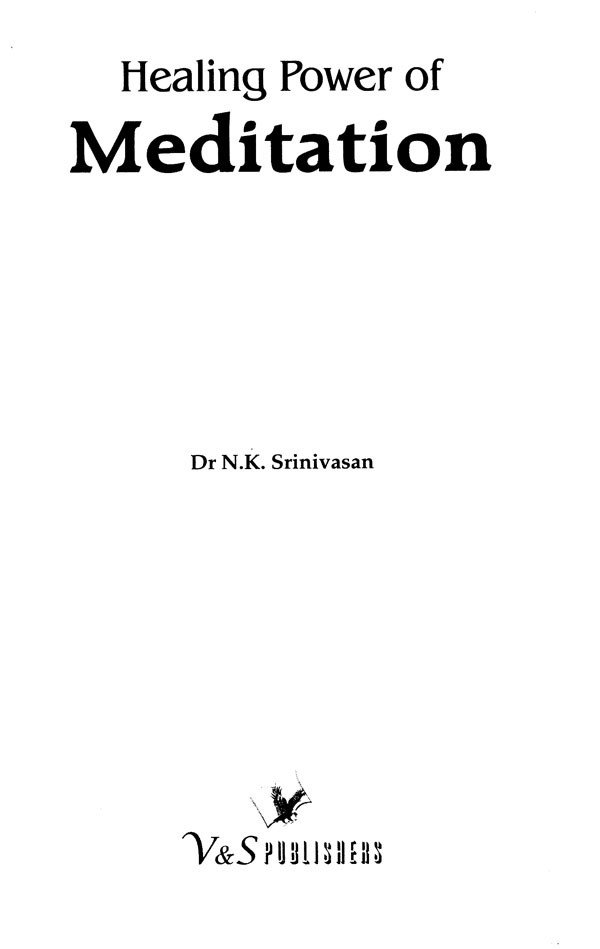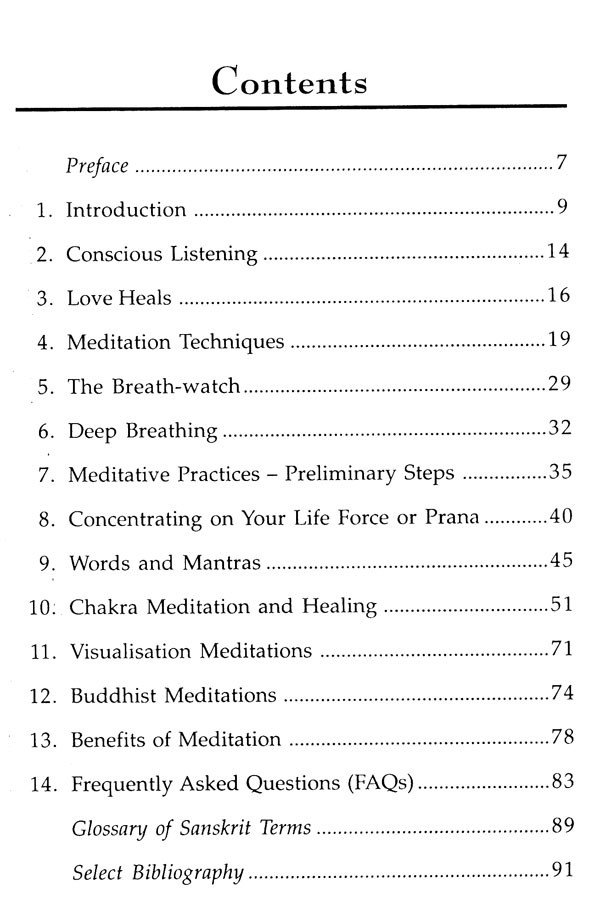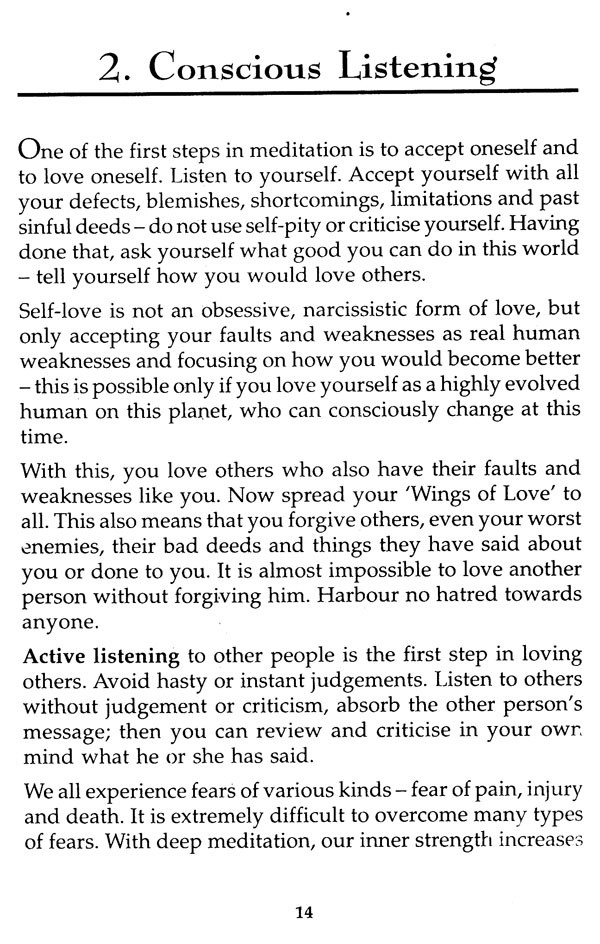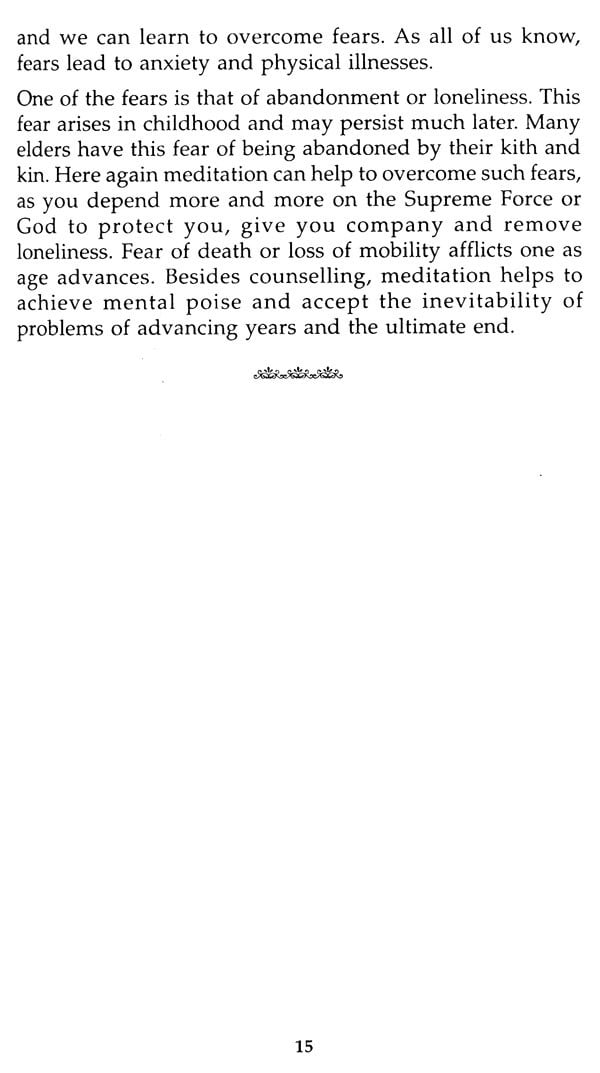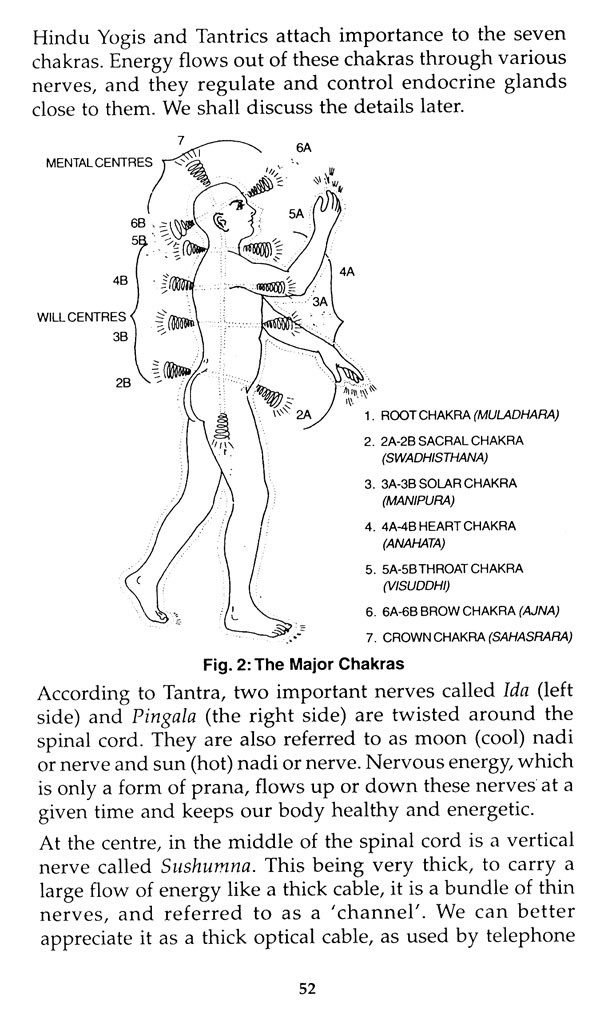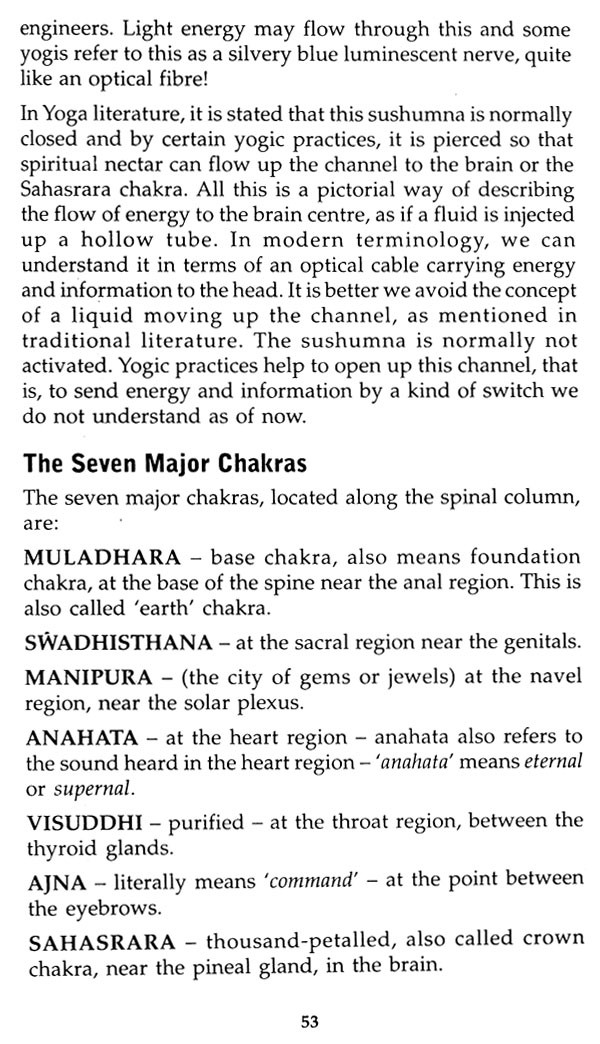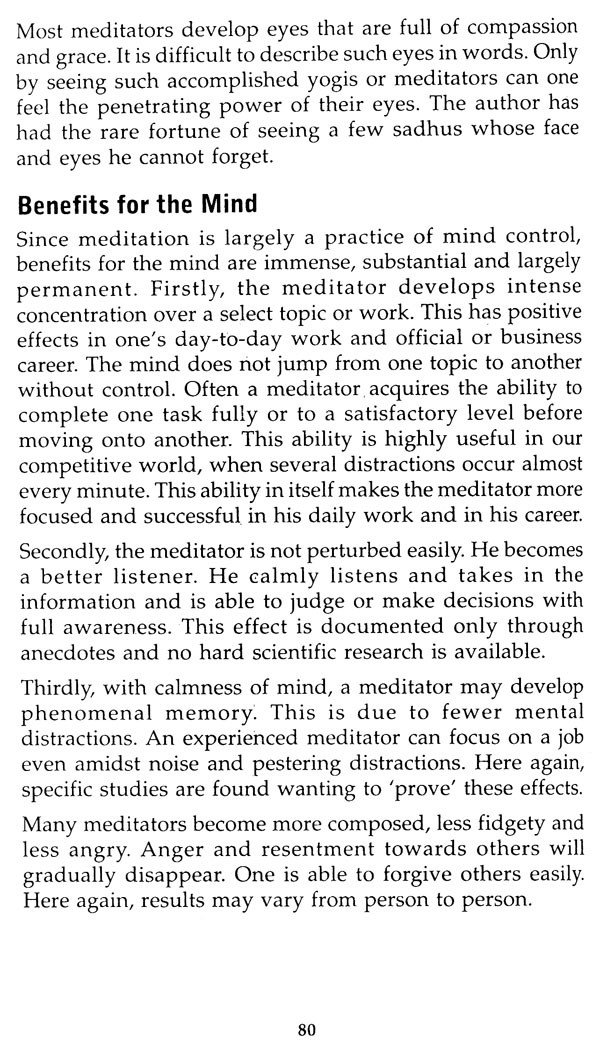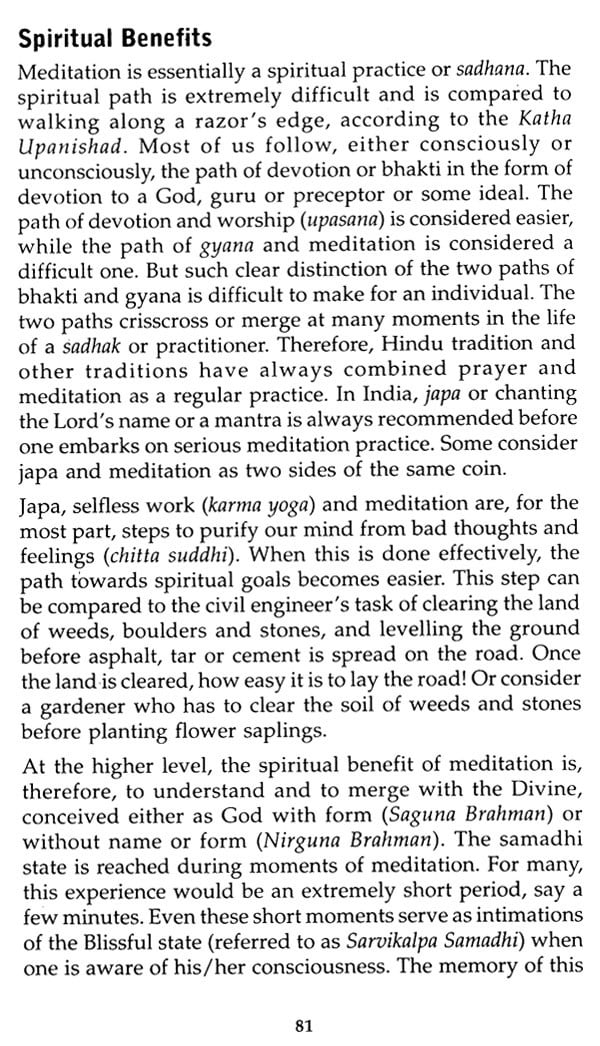
Healing Power of Meditation
Book Specification
| Item Code: | UAZ148 |
| Author: | N.K. Srinivasan |
| Publisher: | V&S PUBLISHERS, Delhi |
| Language: | English |
| Edition: | 2019 |
| ISBN: | 9789381384633 |
| Pages: | 96 (Throughout B/w Illustrations) |
| Cover: | PAPERBACK |
| Other Details | 8.50 X 5.50 inch |
| Weight | 140 gm |
Book Description
The benefits are dearly described so that the practitioner can track his or her progress. The best traditions of meditation in India are presented so that modern folk with limited background of yoga and Indian philosophy can follow the steps. One can learn these techniques without a personal instructor. A detailed chapter on Chakras and Kundalini yoga is valuable for serious meditators. The Baddhist meditations, widely used in the West and meant for awakening inner joy, are described in a separate chapter. Creative visualisation-a meditational technique to achieve practical goals in business life is also given. The book dispels common doubts about the efficacy of meditation and guides and motivates the reader towards the best meditation practices.
Brought up in a deeply religious home, he learnt the scriptures under a Vedic pundit, and later intensely studied the literature of Bhagwan Ramana Maharshi and Sri Ramakrishna. He practiced Transcendental Meditation for four years. After a traumatic experience in 1976. he was drawn to Paramahansa Yogananda and received initiation in Kriya Yoga from a monk of YSS/SRF, Ranchi and practiced it for nearly 15 years. The founder-trustee of two charitable trusts, he devotes his time to Yoga, Reiki. Vedanta and Sai Prachar.
We present several techniques commonly practiced from Indian traditions over the ages. Starting with simple breath- watch, many methods used by yogis and monks are given in simple, easy steps, with numbered practice sessions. One should follow the steps carefully to derive maximum benefit. Certain meditations for healing are also included.
The present book carefully examines some of the controversial issues and presents the best approach or thinking known to the author. Several warnings are given so that the reader is not misled by teachers/gurus who profess wrong or misguided teachings or practice.
Since meditations advanced by Buddhist monks are very important, a chapter is devoted for such practices. In fact, these methods originated in India and later spread to China, Japan and Tibet under the care of Buddhist clergy. A detailed account of chakras and related meditations are given; this is one of the major topics, often misinterpreted in yoga literature.
In a sense, meditation is a natural process as natural as your breathing. No one taught you how to breathe when you were born. Likewise, we all meditate, often unconsciously. When you are at the altar or pooja room at the home or in a temple or church or mosque, a few moments of thoughtless awareness may be experienced. But such moments are rare and fleeting, and may not make an impression in your mind. Here we are talking about conscious meditation through practise, with definite objectives.
The effects or results are bound to be long-lasting and under your control. You are aware of yourself as a meditator in the early stages, though at later times, you lose your awareness. Only when you come out of the meditative state, you feel: "My God, I was in deep meditation for nearly an hour."
Furthermore, the effects of meditation will be felt even after the formal meditative state is over... say for the whole day or for a few days. Meditative experience is similar to deep, dreamless sleep (sushupti) but with this difference - you are conscious of yourself in meditation but not so in deep sleep.
While meditation per se is a natural process, you need some kind of training and guidance to achieve effective results. A child may learn swimming very fast with little coaching.
**Contents and Sample Pages**
